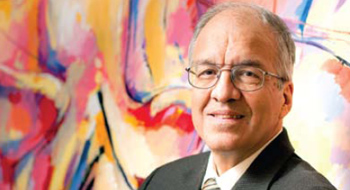

For Michel Lizée, independent member and pension committee secretary of the Régime de retraite à financement salarial des groupes communautaires et de femmes (RRFS-GCF) in Montreal, the journey toward establishing a pension solution for employees in Quebec’s social economy sector began in 2004 with a “bad joke” he made to a colleague.
“I said, ‘You people are working to improve conditions for everybody, and you’ll all end up poor when you retire.’ She said I was being harsh, but I told her that was the reality.”
When that same friend later approached Lizée—a co-ordinator of community services with the Université du Québec à Montréal and a trustee with the university pension plan—for information to help her colleagues identify pension options, they quickly realized no viable solution existed for the 50,000 to 80,000 people working in Quebec’s small community groups. According to Lizée, most of these organizations average only six or seven staff members and lack the capacity to create their own pension programs.
Regulations put in place in 2007 by the Quebec Pension Board opened the door for the establishment of multi-employer pension funds for small and medium-size organizations. Lizée realized this would be the ideal solution for those in community groups and began working with sector representatives to develop a plan.
The plan allows each employer to determine its own contribution rates (between 2% and 18%, with at least 50% supported by the employer), which can be adjusted annually if the employer’s financial situation changes. The annual benefit at age 65 is equal to 10% of regular career contributions.
The plan also uses a risk management approach aimed at avoiding deficits and stabilizing contribution rates. Because active participants support the contribution risk, a conservative benefit formula was established to create an initial reserve in excess of regulator requirements. This allows for surpluses to be used later for indexing or improving benefits.
The plan was launched on Oct. 1, 2008, amid the economic downturn, which Lizée initially thought might be poor timing. But commencing at a period he calls “the bottom of the market” helped it post a 24% return over its first 15 months.
Currently, 280 organizations comprising close to 2,000 employees are enrolled in the plan. But enrolling new members is challenging. The average salary of Quebec’s community group employees is just $28,000, making it difficult to put away a percentage of their pay for retirement. Also, since many employers in the sector have never offered a pension plan, many employees have never contributed to one.
But new employers continue to sign on each week, partly due to a series of presentations made to community groups across Quebec focused on the importance of having a pension over and above the Quebec Pension Plan.
Lizée says many presentation attendees were shocked to find out that they might not have enough if they relied solely on government retirement benefits. “People overestimate the income they’re likely to have at retirement and underestimate how much they need to save now in order to maintain their standard of living.”
He says the committee will continue its outreach so sector employers are aware of the plan. “Because there are no other options, we may reasonably assume that within five or 10 years, a significant portion of employees in the sector will join. The key, in the meantime, is for us to keep the plan well funded, so people have the confidence that they’re joining something solid.”
